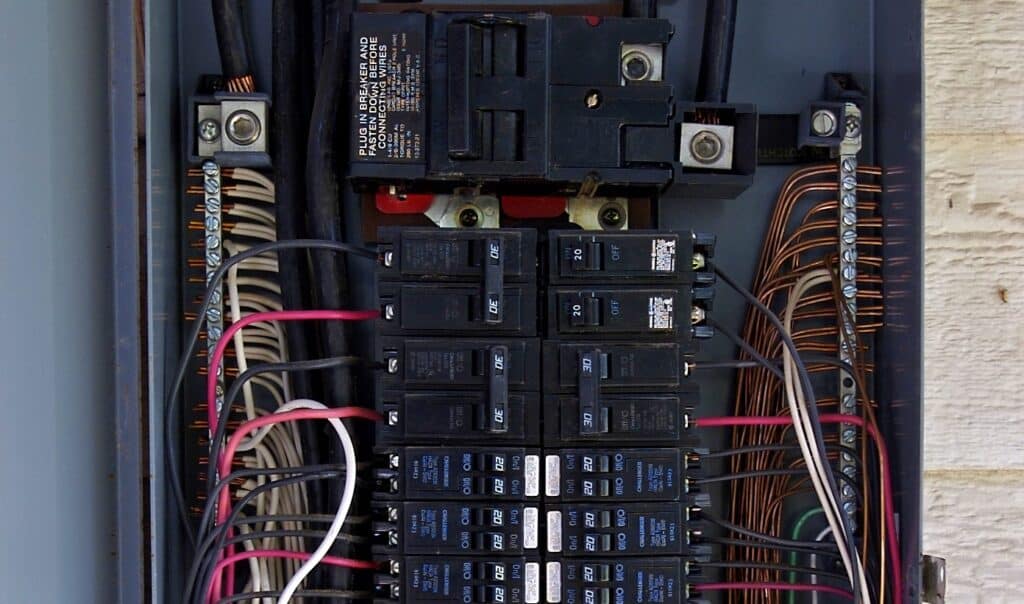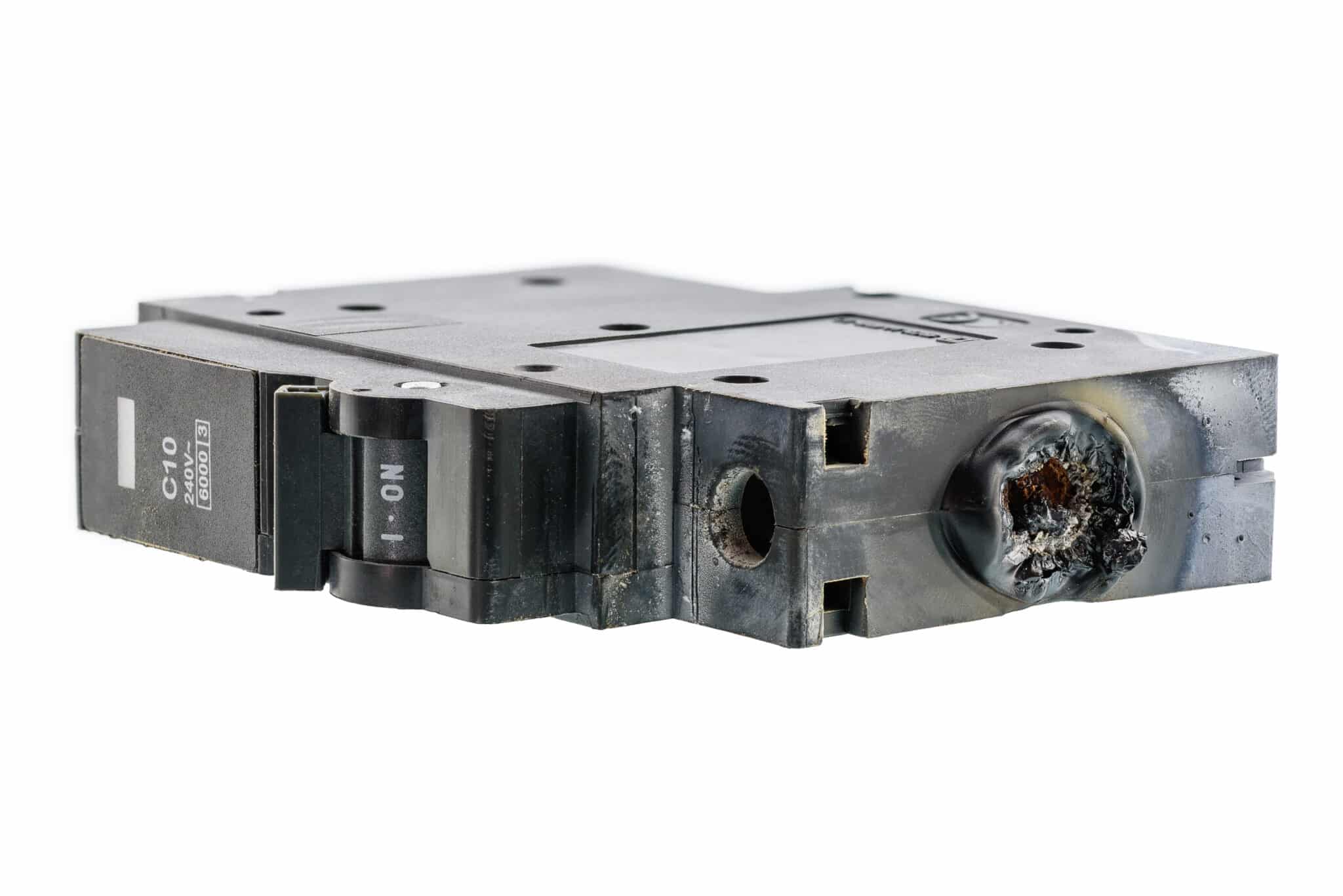Arc Fault Circuit Interrupters- Have you ever heard a crackling sound coming from your electrical outlets or noticed your lights flickering for no apparent reason?
These could be signs of an arc fault or a potentially dangerous electrical problem. But don’t worry, there’s a device designed to protect your home from such hazards—Arc Fault Circuit Interrupters (AFCIs).
In this blog, we’ll explore what Arc Fault Circuit Interrupters are, how they work, and why they’re essential for your home’s safety.
What are Arc Fault Circuit Interrupters (AFCIs)?
Definition and Purpose
Arc Fault Circuit Interrupters (AFCIs) are electrical devices designed to detect and interrupt arc faults before they can cause electrical fires.
Arc faults occur when there is an unintentional discharge of electricity across a gap, often due to damaged wires, loose connections, or worn insulation.
These faults generate high temperatures that can ignite surrounding materials, posing a serious fire risk. AFCIs are engineered to sense these dangerous arc faults and automatically shut off the circuit, preventing potential fires.
History and Development
The concept of AFCIs emerged in response to the increasing awareness of electrical fire hazards. The National Fire Protection Association (NFPA) and the U.S.
The Consumer Product Safety Commission (CPSC) played a significant role in advocating for the development and adoption of AFCIs.
Since their introduction in the late 1990s, AFCIs have become a critical component of modern electrical safety systems, with continuous improvements enhancing their reliability and effectiveness.
Importance in Modern Electrical Safety
AFCIs are vital in preventing electrical fires, which are a leading cause of residential fires. By detecting arc faults and shutting down the affected circuit, AFCIs protect homes and save lives.
Building codes in many regions, including the National Electrical Code (NEC) in the United States, now require AFCIs in various parts of new residential constructions, underscoring their importance in ensuring electrical safety.
How Do AFCIs Work?
Basic Operation
AFCIs work by continuously monitoring the electrical current in a circuit for signs of arcing. They use advanced sensors to detect the unique electrical signatures of arc faults, differentiating them from normal electrical activity.
When an arc fault is detected, the AFCI quickly interrupts the circuit, stopping the flow of electricity and preventing the arc from causing a fire.
Types of Arcs Detected
AFCIs can detect several types of arcs, including:
- Series Arcs: These occur when a single conductor is damaged, often due to wear and tear or loose connections.
- Parallel Arcs: These happen when two conductors are damaged, leading to arcing between them, usually because of insulation failure.
Differences Between AFCIs and GFCIs
While both AFCIs and Ground Fault Circuit Interrupters (GFCIs) are crucial for electrical safety, they serve different purposes. GFCIs protect against electric shock by detecting ground faults—when electricity escapes to the ground and poses a shock hazard.
In contrast, AFCIs focus on preventing electrical fires by detecting arc faults. Some modern devices combine both functions, offering comprehensive protection against both shock and fire hazards.
Types of AFCIs
Branch Circuit/Feeder AFCI Breaker
Branch Circuit/Feeder AFCI Breakers are installed at the electrical panel and protect the entire circuit, including branch circuits and feeders. They are typically used in new constructions or during major electrical renovations.
Combination Breaker AFCI
Combination Breaker AFCIs provide enhanced protection by detecting both series and parallel arcs. They are ideal for residential applications, offering comprehensive protection against a wide range of arc fault scenarios.
Dual-Function AFCI/GFCI Protection
Dual-Function AFCI/GFCI breakers combine the protective features of both AFCIs and GFCIs in one device. They are designed to detect both arc faults and ground faults, providing extensive safety coverage for homeowners.
Portable AFCIs
Portable AFCIs are plug-in devices that offer arc fault protection for individual appliances or temporary electrical setups. They are particularly useful in older homes or when additional protection is needed for specific equipment.

Installation of AFCIs
Installation Process
Installing AFCIs involves replacing standard circuit breakers with AFCI breakers in the electrical panel. This process should be performed by a licensed electrician to ensure proper installation and compliance with electrical codes.
Key Considerations
When installing AFCIs, it’s essential to consider the following:
- Compatibility: Ensure the AFCI breaker is compatible with the electrical panel and wiring system.
- Location: Identify the circuits that require AFCI protection, as specified by the NEC or local building codes.
- Testing: Test the AFCIs after installation to verify they are functioning correctly.
Common Challenges and Solutions
Some common challenges during AFCI installation include:
- False Tripping: AFCIs may sometimes trip unnecessarily due to electrical noise or incompatible devices. Solutions include troubleshooting the circuit and ensuring proper wiring practices.
- Compatibility Issues: Older electrical panels may not support AFCI breakers. In such cases, consider upgrading the panel or using portable AFCIs.
Required Locations for AFCIs
NEC Requirements
The National Electrical Code (NEC) mandates the use of AFCIs in various parts of new residential constructions, including:
- Bedrooms
- Living rooms
- Dining rooms
- Hallways
- Kitchens
Specific Areas in the Home
In addition to the NEC requirements, Arc Fault Circuit Interrupters are recommended in any area where electrical wiring is present, especially in older homes with outdated wiring systems.
This is particularly important in places like Summerville and Mt. Pleasant, where many homes might have older electrical setups that could benefit from the added protection of AFCIs.
Recent Updates to AFCI Placement
The NEC continuously updates its requirements for AFCI placement to enhance safety. Recent updates may include additional areas such as laundry rooms and basements, reflecting the evolving understanding of electrical fire risks.
These updates aim to ensure that homes in Summerville, Mt. Pleasant, and other regions stay protected against the dangers posed by arc faults.
Advantages of Using AFCIs
Enhanced Safety Features
Arc Fault Circuit Interrupters provide a significant safety advantage by detecting and interrupting arc faults before they can cause fires. Their advanced sensors and monitoring capabilities make them a critical component of modern electrical safety systems.
Prevention of Electrical Fires
By preventing arc faults from developing into fires, AFCIs protect homes and save lives. This proactive approach to fire safety is especially important in reducing the risk of residential fires caused by electrical issues.
Compliance with Electrical Codes
Installing AFCIs ensures compliance with current electrical codes and standards, which is essential for new constructions and renovations. This compliance not only enhances safety but also adds value to the property.
Disadvantages of AFCIs
Cost Considerations
AFCIs are more expensive than standard circuit breakers, which can increase the overall cost of electrical installations. However, the enhanced safety they provide justifies the additional expense.
Potential for False Tripping
AFCIs may occasionally trip unnecessarily due to electrical noise or incompatible devices. While this can be inconvenient, proper installation and troubleshooting can minimize false tripping.
Compatibility Issues
Older homes with outdated electrical systems may face compatibility issues when installing AFCIs. Upgrading the electrical panel or using portable AFCIs can address these challenges.

Common Causes of Arc Faults
Damaged Wiring
Damaged wiring is one of the most frequent causes of arc faults. This type of damage can occur for several reasons:
- Wear and Tear: Over time, the insulation around wires can deteriorate, exposing the conductive metal underneath. This exposure can lead to arc faults.
- Rodents: Animals like mice and rats often chew on wires, stripping away insulation and increasing the risk of an arc fault.
- Accidental Damage: Renovation projects or even minor home improvements can inadvertently damage wiring. Drilling into walls or pulling on wires can cause the insulation to break, creating the potential for arc faults.
Arc Fault Circuit Interrupters (AFCIs) are designed to detect these faults, shutting off the circuit to prevent fires caused by damaged wiring.
Loose Connections
Loose connections at outlets, switches, or junction boxes can create gaps that lead to arc faults. These gaps can result in intermittent electrical contact, which generates heat and can ignite nearby materials.
Regular maintenance and inspection can help identify and fix loose connections before they become a serious hazard.
Environmental Factors
Environmental factors such as humidity, temperature fluctuations, and exposure to corrosive materials can degrade wiring insulation, increasing the risk of arc faults. For example:
- Humidity: Moisture can seep into electrical components, causing insulation to break down and increasing the likelihood of an arc fault.
- Temperature Fluctuations: Extreme temperatures can cause materials to expand and contract, leading to cracks in insulation and wiring.
- Corrosive Materials: Exposure to chemicals or other corrosive substances can erode insulation and metal components, creating vulnerabilities in the electrical system.
Arc Fault Circuit Interrupters are essential in environments prone to these conditions, providing an additional layer of protection by detecting potential faults early.
Signs You Might Need AFCIs
Frequent Tripping of Circuit Breakers
If your circuit breakers trip frequently, it could indicate an underlying arc fault issue. Circuit breakers are designed to protect your electrical system by shutting off the flow of electricity when an overload or short circuit occurs. However, frequent tripping might signal a more complex problem, such as an arc fault.
Installing Arc Fault Circuit Interrupters can help detect and address these faults, enhancing overall safety. AFCIs provide more specific protection against arc faults, ensuring that your electrical system remains secure.
Flickering Lights
Flickering lights are a common sign of arc faults, often caused by loose connections or damaged wiring. When the electrical connection is unstable, it can result in intermittent power flow, causing lights to flicker. While flickering lights can be an annoyance, they also pose a significant fire risk if the underlying issue is an arc fault.
AFCIs can detect these faults and prevent potential fires by shutting down the circuit when irregularities are detected, keeping your home safe.
Unusual Sounds from Outlets
Crackling or buzzing sounds from outlets can indicate arc faults. These sounds result from electricity arcing across gaps in the wiring. This arcing generates heat, which can ignite surrounding materials and lead to a fire.
Arc Fault Circuit Interrupters are designed to detect these dangerous arc faults. When an AFCI senses the electrical signature of an arc fault, it quickly interrupts the circuit, stopping the flow of electricity and preventing the fault from causing a fire.
By recognizing these signs and installing AFCIs where needed, you can significantly reduce the risk of electrical fires in your home.
AFCIs provide a critical safeguard, ensuring that even if arc faults occur, they are detected and dealt with swiftly, maintaining the safety of your electrical system
AFCI Maintenance Tips
Regular Testing Procedures: Regularly test your AFCIs to ensure they are functioning correctly. Most AFCIs have a test button that allows you to simulate an arc fault and verify the device’s response.
Professional Inspection Recommendations: Have a licensed electrician inspect your electrical system periodically to identify and address any potential issues, including arc faults. This professional maintenance helps ensure the long-term reliability of your AFCIs.
Troubleshooting Common Issues: If you experience frequent tripping or other issues with your AFCIs, consult with an electrician to troubleshoot the problem. Common solutions include checking for loose connections, replacing damaged wiring, and ensuring proper installation.
Upgrading to AFCIs in Older Homes
Benefits of Upgrading
Upgrading to AFCIs in older homes provides enhanced protection against electrical fires, addressing the higher risk posed by outdated wiring systems. This upgrade improves overall safety and peace of mind.
Steps to Upgrade
- Assessment: Have an electrician assess your current electrical system and identify areas that need AFCI protection.
- Installation: Replace standard breakers with AFCI breakers in the electrical panel.
- Testing: Test the newly installed AFCIs to ensure they are functioning correctly.
Costs Involved
The cost of upgrading to AFCIs includes the price of the breakers and the electrician’s labor. While this investment may be higher than standard breakers, the enhanced safety benefits are well worth it.
The Future of AFCIs
Technological Advancements
Technological advancements continue to improve the performance and reliability of AFCIs. Future developments may include more precise detection algorithms and integration with smart home systems for enhanced monitoring and control.
Potential New Standards
As the understanding of electrical safety evolves, new standards and regulations for AFCI placement and usage may emerge. Staying informed about these changes ensures continued compliance and safety.
Innovations in Home Electrical Safety
Innovations in home electrical safety, such as smart circuit breakers and integrated safety systems, are likely to enhance the role of AFCIs. These advancements will provide even greater protection against electrical hazards.
Conclusion
Arc Fault Circuit Interrupters (AFCIs) are a vital component of modern electrical safety, protecting homes from the dangers of electrical fires.
By detecting and interrupting arc faults, AFCIs prevent potentially devastating fires and save lives.
Understanding how AFCIs work, their types and their benefits can help you make informed decisions about electrical safety in your home.
Protect Your Home with Mister Sparky of Charleston!
Ensure your home is safe from electrical hazards with professional AFCI installation and maintenance. Contact Mister Sparky of Charleston today at 843-588-1912 for reliable and expert electrical services.
By staying informed and proactive, you can significantly reduce the risk of electrical fires and enhance the safety of your home.
Trust in the expertise of professionals like Mister Sparky of Charleston to provide the highest level of protection for your family and property.
Frequently Asked Questions
What Makes Arc Fault Circuit Interrupters Different from Regular Circuit Breakers?
Arc Fault Circuit Interrupters (AFCIs) are specifically designed to detect and interrupt arc faults, preventing electrical fires. While regular circuit breakers protect against overcurrent and short circuits, they cannot detect arc faults.
Can I Install Arc Fault Circuit Interrupters Myself?
While it is possible to install Arc Fault Circuit Interrupters yourself, it is recommended to have a licensed electrician perform the installation. Professional installation ensures proper setup and compliance with electrical codes, minimizing the risk of improper installation and enhancing overall safety.
How Often Should Arc Fault Circuit Interrupters Be Tested?
Arc Fault Circuit Interrupters should be tested at least once a month using the test button on the device. Regular testing ensures that the AFCI is functioning correctly and provides continuous protection.
Are Arc Fault Circuit Interrupters Required in Commercial Buildings?
The requirements for Arc Fault Circuit Interrupters in commercial buildings vary by jurisdiction. While AFCIs are commonly required in residential settings, some commercial applications may also benefit from AFCI protection. It is important to check local building codes and regulations to determine if AFCIs are required or recommended for your specific commercial building.
Can Arc Fault Circuit Interrupters Prevent All Electrical Fires?
While Arc Fault Circuit Interrupters significantly reduce the risk of electrical fires caused by arc faults, they cannot prevent all types of electrical fires. AFCIs specifically address the dangers posed by arc faults but do not protect against other hazards such as overloading or short circuits.
Are Arc Fault Circuit Interrupters Necessary in Older Homes?
Yes, Arc Fault Circuit Interrupters are highly recommended for older homes. Older wiring systems are often more prone to damage and wear, increasing the risk of arc faults. Upgrading to AFCIs in an older home can provide enhanced protection against electrical fires, ensuring the safety of the residents and the property.









